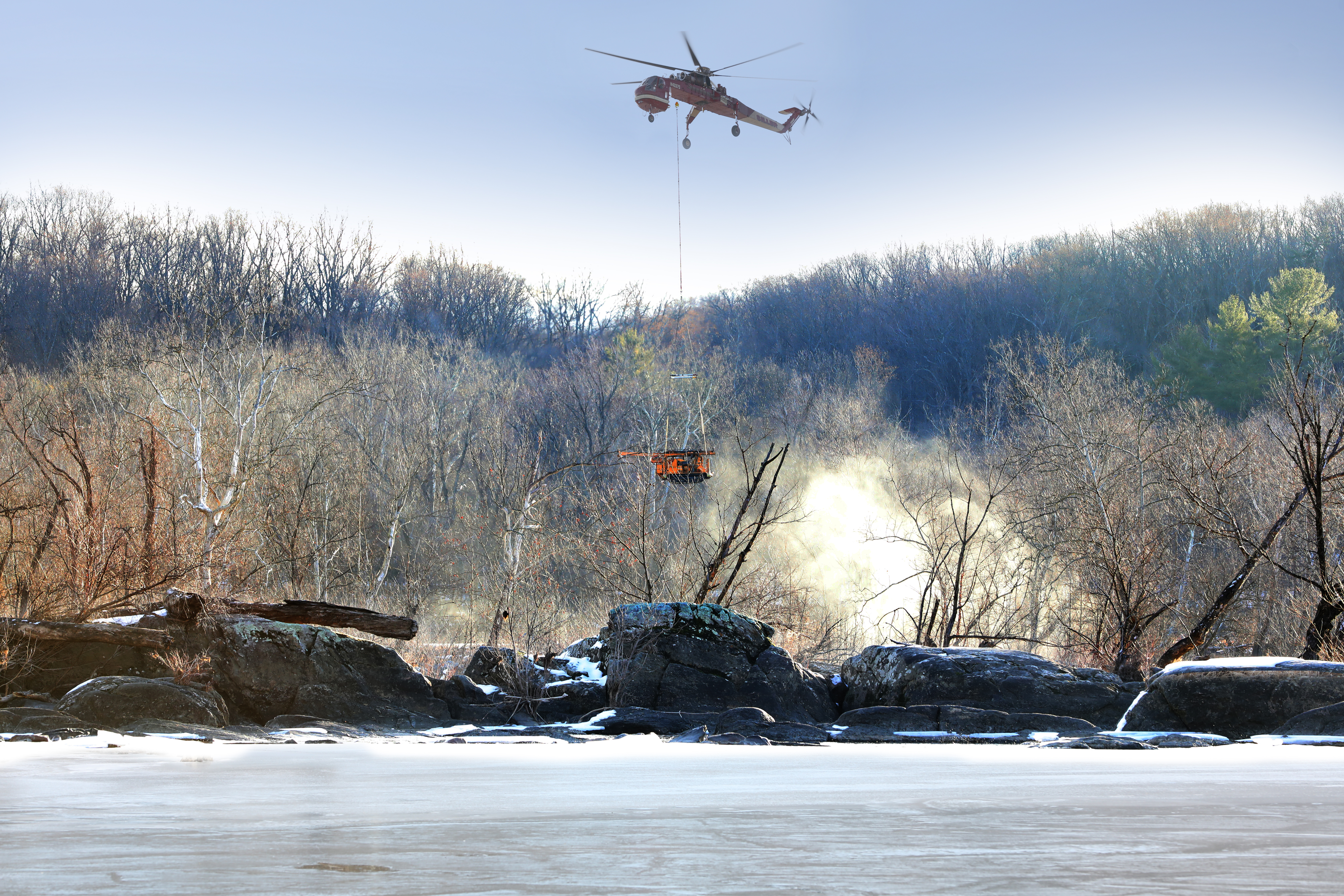Lead is a common metal found in the environment. The main sources of lead exposure are lead based paint, lead contaminated dust or soil and some plumbing material. In addition, lead can be found in certain types of pottery, pewter, brass fixtures, food, and cosmetics. Other sources include exposure in the work place and exposure from certain hobbies (lead can be carried on clothing or shoes).
Water is essentially lead free when it leaves the Washington Aqueduct treatment plant. It can enter drinking water from the corrosion of lead pipes and plumbing materials that contain lead. EPA estimates that 10 to 20 percent of a person’s potential exposure to lead may come from drinking water. Infants who consume mostly formula mixed with lead-containing water can receive 40 to 60 percent of their exposure to lead from drinking water.
Water is essentially lead free when it leaves the Washington Aqueduct treatment plant. It can enter drinking water from the corrosion of lead pipes and plumbing materials that contain lead.
Sources of lead in drinking water:
Lead service pipes- In the District, lead service pipes were installed until the mid-1950s. Older properties may still have lead service pipes, which connect the water main in the street to household plumbing.Lead solder - Solder is the material that connects pipes in household plumbing. In 1987, lead solder was banned from use in household plumbing. If your house was built before 1987, your plumbing may have lead solder.Brass faucets, valves or fittings- Almost all faucets, valves and fittings have brass components. Until 2014, brass faucets and fittings sold in the U.S. and labeled "lead-free" could contain up to eight percent lead. Effective January 2014, the Reduction of Lead in Drinking Water Act specifies that these materials may not contain more than 0.25 percent lead.Galvanized iron pipes- Galvanized iron pipes were installed in many homes before the 1960s. These pipes can release lead in water if the property has, or previously had, a lead service pipe. Galvanized pipes are made with a protective layer of zinc. However, the zinc layer erodes over time and results in corrosion. When lead is released from a lead service pipe and passes through galvanized plumbing, lead can accumulate on the walls of the galvanized iron pipes.
Lead can cause serious health problems if too much enters your body from drinking water or other sources. It can cause damage to the brain and kidneys and can interfere with the production of red blood cells that carry oxygen to all parts of your body. The greatest risk of lead exposure is to infants, young children, and pregnant women. Scientists have linked the effects of lead on the brain with lowered IQ in children. Adults with kidney problems and high blood pressure can be affected by low levels of lead more than healthy adults. Lead is stored in the bones and can be released later in life. During pregnancy, the child receives lead from the mother’s bones which may affect brain development.
DC Water
Complies with the Environmental Protection Agency's (EPA) Lead and Copper Rule.
Conducts regulatory and voluntary lead testing and reports results to EPA Region III.
Conducts public outreach and education.
Participates in national research studies.
US Army Corps of Engineers Washington Aqueduct
Operates two drinking water treatment plants.
Applies corrosion control treatment to minimize pipe corrosion in the distribution system and customer households.
Monitors lead levels as water leaves the treatment plant and reports results to EPA Region III.
Public
Responsible for water service pipes and household plumbing.
Responsible for ensuring household water quality and minimizing lead exposure, including testing water for lead, flushing household plumbing, and if necessary, using a water filter.
Department of Energy and the Environment (DOEE)
Enforces the District's lead laws to keep housing and child-care facilities safe.
Works with families of children whose blood tests show elevated levels of lead.
District Department of General Services
Provides water lead testing in District public schools
Environmental Protection Agency (EPA) Region III, Philadelphia, PA
Enforces compliance with the Lead and Copper Rule in the District of Columbia.
Provides technical assistance to Washington Aqueduct and DC Water.
Reviews treatment processes, monitoring plans and test results to verify compliance with the Lead and Copper Rule.
Issues violations for noncompliance and requires corrective actions to achieve compliance.
Centers for Disease Control and Prevention
Childhood Lead Poisoning Prevention Program develops and policies and strategies to prevent lead poisoning
Educates the public and health care providers about childhood lead poisoning.
Provides funding to state and local health departments.
Supports research to measure effectiveness of prevention efforts at federal, state and local levels.
DC Water offers free annual lead testing to help residents identify potential lead sources. Lead test kits are delivered to customer households to allow homeowners to collect water samples. To request a free lead test kit, complete this form https://leadtesting.dcwater.com/ or email leadtest@dcwater.com .
If lead is present in your drinking water, if you have pipes or plumbing fixtures that contain lead, or if you don’t know the material type, you should take steps to minimize potential lead exposure until all sources of lead have been removed. Flush your pipes before using any tap water for drinking or cooking. Run the water until it the temperature changes and then allow it to run for an additional two minutes. Use only cold water for drinking and cooking. Filter your water before drinking and cooking until all sources of lead have been removed. This includes water used for making infant formula, beverages, and ice.
Learn more about steps to reduce your risk of lead exposure .
Each year, DC Water replaces lead service lines in conjunction with other construction projects. These projects include water main replacements, emergency repairs and District Department of Transportation (DDOT) projects. During these projects, DC Water replaces water service pipes in public space, including existing lead service pipes, and will offer to coordinate the replacement of the water service pipe on private property at the owner's expense. Property owners are strongly encouraged to take advantage of this opportunity to replace the portion of a lead pipe on their private property.
DC Water customers who voluntarily choose to replace their lead service line can participate in DC Water's voluntary lead service pipe replacement program. If a property owner meets specific requirements and agrees to pay for lead service pipe replacement on their private property, DC Water will coordinate and replace the portion in public space at the same time. For more information about voluntary lead service pipe replacements, visit the voluntary lead service replacement page , call Customer Service at (202) 354-3600 or email lead@dcwater.com .
Visit our service line replacemen t page for more information.
You can find out more information about lead by visiting the lead sections of these websites: DC Water , the EPA , or the CDC .
Water remains virtually lead-free as it leaves the treatment plant and moves through our water mains in the street. Our distribution system is not a source of lead in water, however, there remain lead service pipes that connect individual homes to the city water supply. Other sources of lead include galvanized iron pipes, lead solder, and brass faucets or fixtures inside homes.


